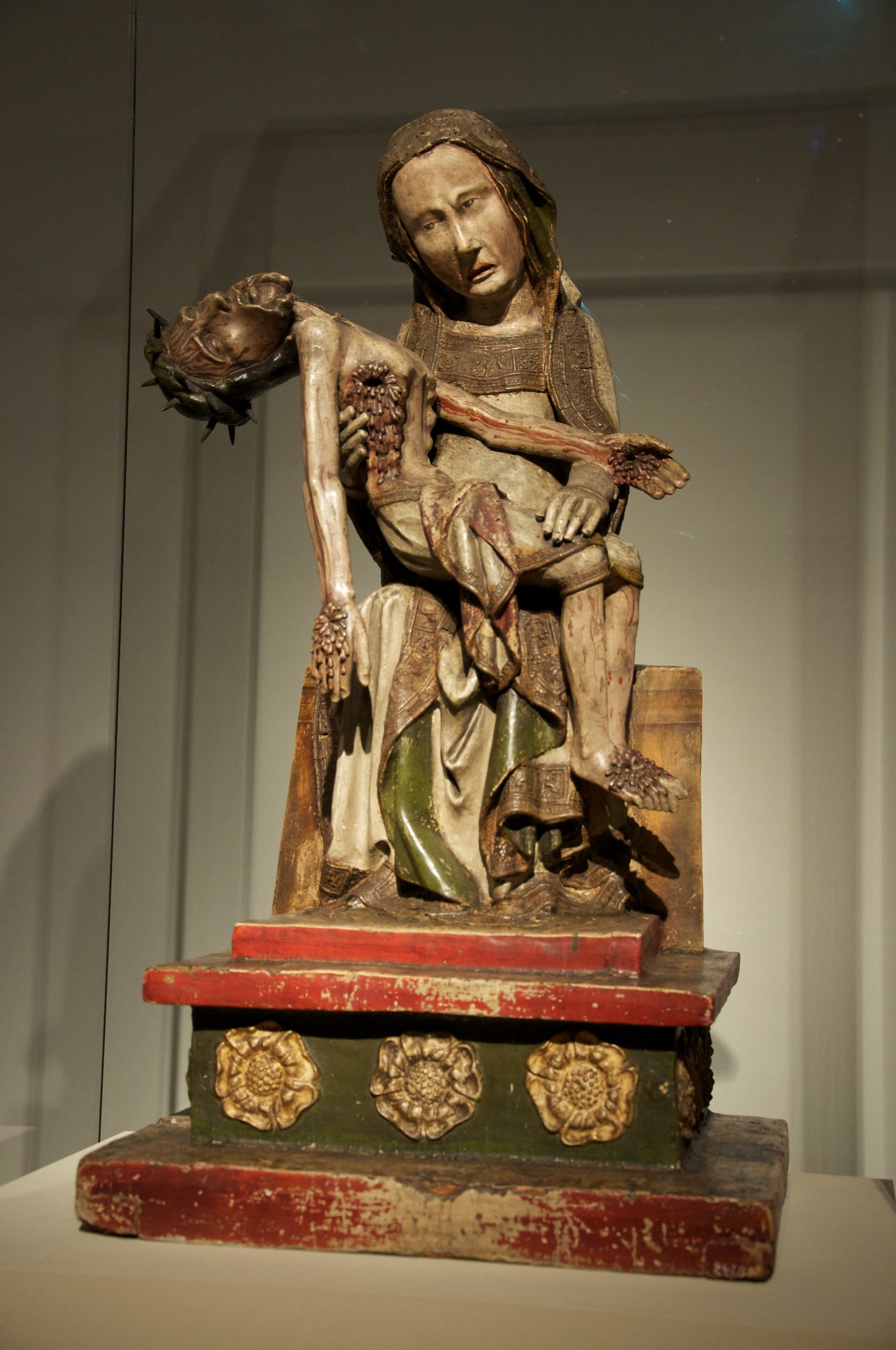Art History Exam 4
1/22
Earn XP
Description and Tags
Name | Mastery | Learn | Test | Matching | Spaced |
|---|
No study sessions yet.
23 Terms
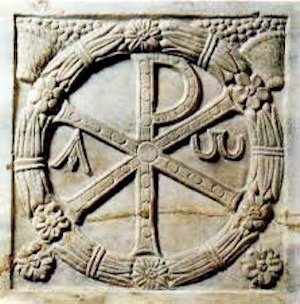
Chi Rho
X (Chi) and P (Rho) stands for the Greek name of Christ.
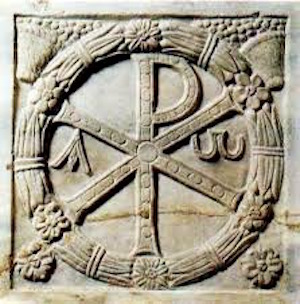
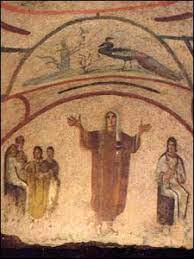
Peacock
immortality or the resurrection of Christ
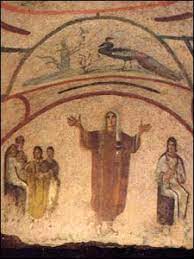
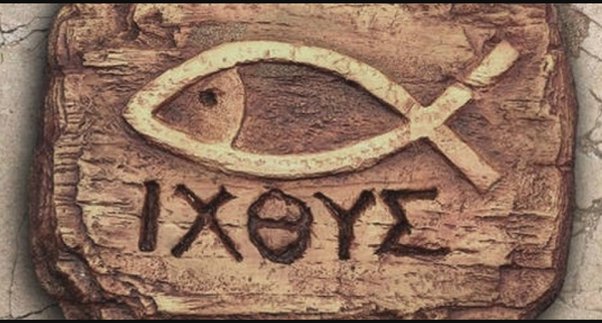
Fish (Ichthys)
"Jesus Christ The Son of God"
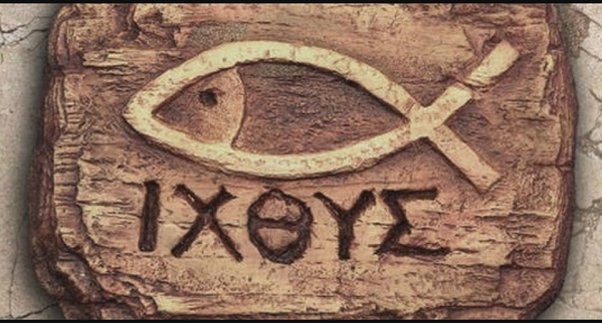
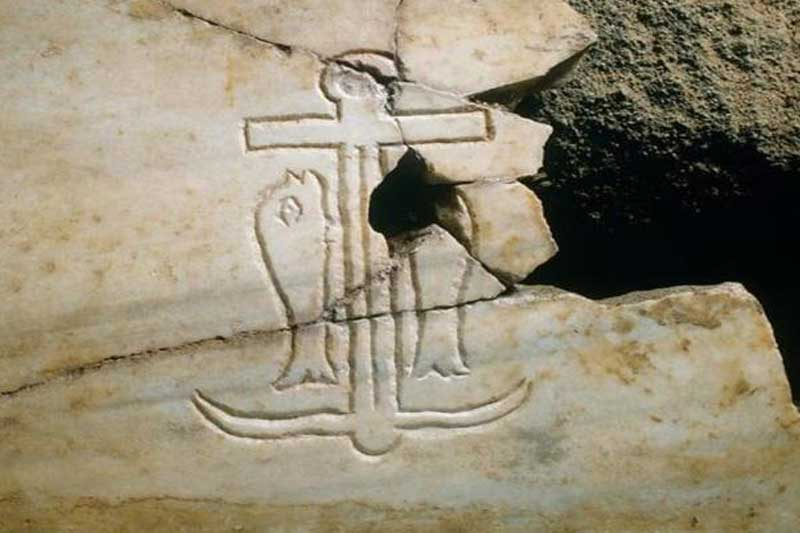
Anchor
Hope for the future
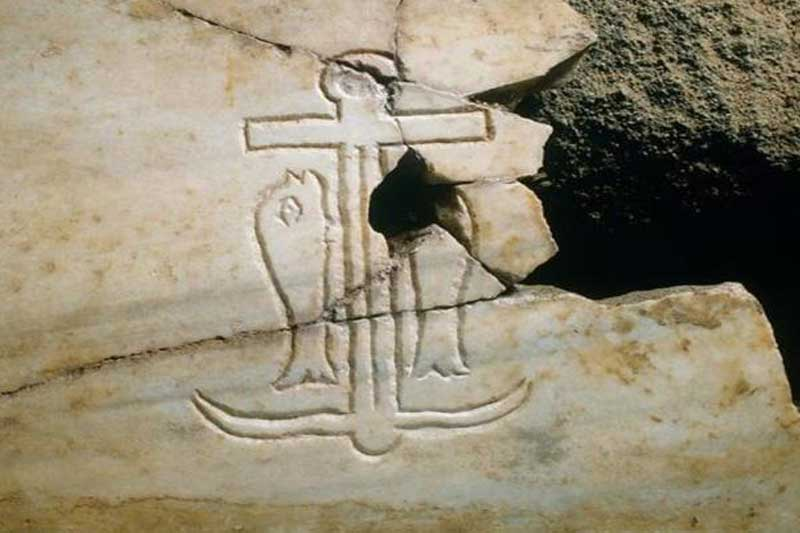
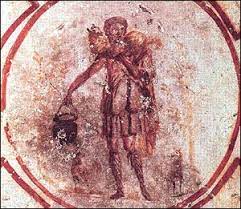
The Good Shepard
Represented Christ without explicitly showing who it was

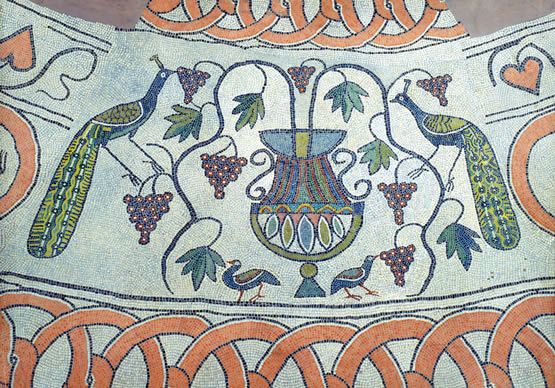
Grape Vines and Harvest
Grape Vines: the blood of Christ
Harvest: God's provision and blessing
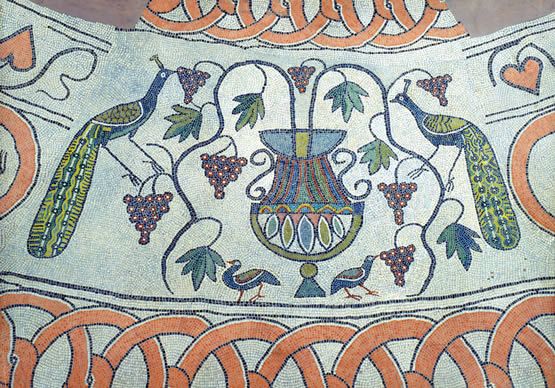
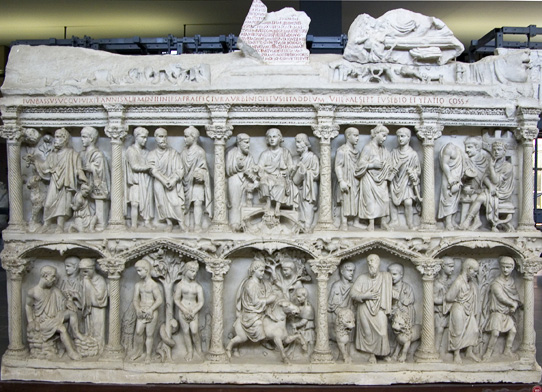
Sarcophagus of Junius Bassus
- Junius Bassus: A roman prefect of Rome died 359 C.E., made of Marble, St. Peter's Basilica
- Believed he converted to Christianity shortly before death, Christianity was newly becoming the religion of Rome put into place by Constantine
- shows a young Christ in the center with Peter and Paul on either side.
-Mainly Frontal, Naturalistic Movement, high relief - Some figures are in Contrapposto, start to look like how Christian art will look (unproportionate head to body and stubby body)
- Many scenes from the old and new testemates
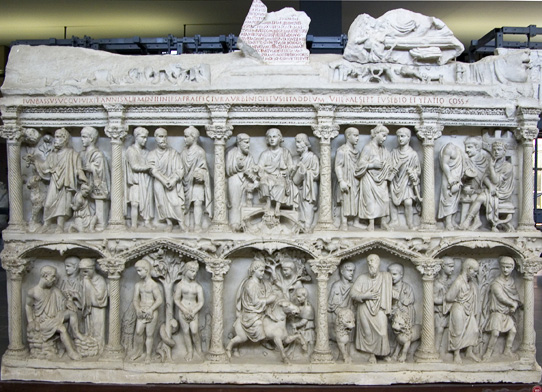

Basilica Of Santa Sabina
-c. 432 C.E. Rome, wooden truss roof, shows what the original St. Peter's Basilica looked like.
- Central axis that leads from the entrance to the apse. Nave has clerestory windows for direct lighting, the "glass" of the windows is actually gypsum. The visual aspects of the column guide to the alter, does not have a transept
- columns and pilasters form verticals that tie together different levels, does not support the building, it visualizes the weight
- the allowance of so much light was a symbol of divinity and Christ.
- Wooden doorway that depicts old and new testament scenes, one showing the first depictions of the crucifixion
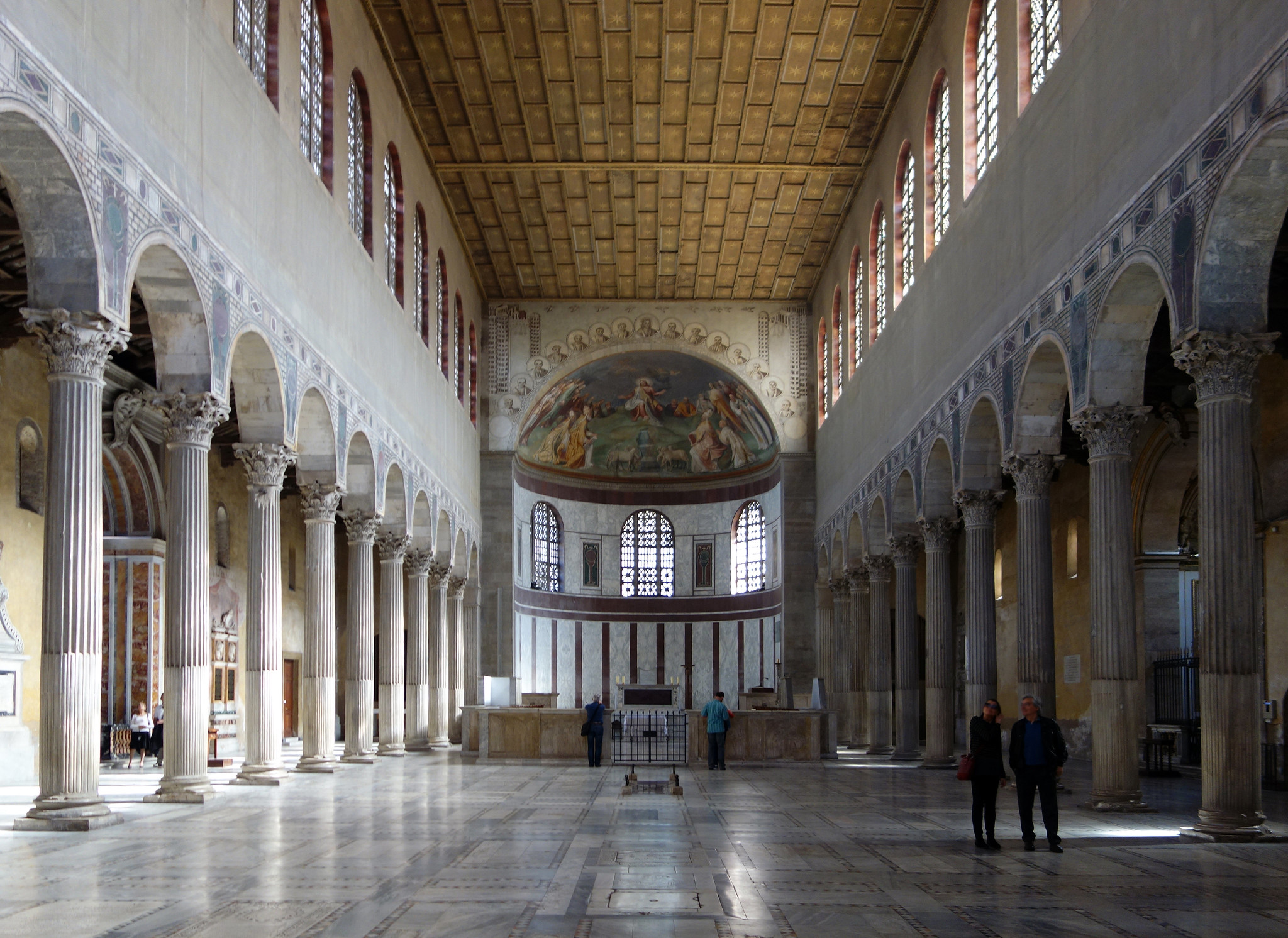

Emperor Triumphant (Barberini Ivory)
- 6th Century, Ivory, believed to be made in a workshop in Constantinople
- transition between Roman art and Byzantine art
-Top Panel: Christ, Signaling blessing, surrounded by symbols of the sun, moon, and stars, depicts a younger Christ, two angels represent Nike. - Middle Panel; Emperor, most deeply carved panel, also shows figures of Nike, a foe figure is behind the emperor representing the barbarians, female figure under the horse representing bounty of the Earth, High relief
- Left Panel: General, shallow relief, bags of stolen goods, lower status than the emperor
-Lower Panel: other figures, symbols of military triumph, bearded figures bringing gifts on the left, conquered people on the left.


Hagia Sophia
- c. 532-537 C.E., Istanbul
- Original two churches were burnt down in riots (Nika Riot), Emperor Justinian was the patron of this church, design unified the look of a basilica with a centrally planned space
- High dome on a square base, and two half domes, supported by hidden structures "dome on pendentives, 40 windows are at the base to allow light to come in
-golden mosaics represent the unity between the political power of the emperor and the spiritual world, the glass of windows was originally colored, and Justinian imported the marble for the walls from all over the empire - columns are in classic iconic order; the holes in the capital of the columns show that they were not meant to support the building

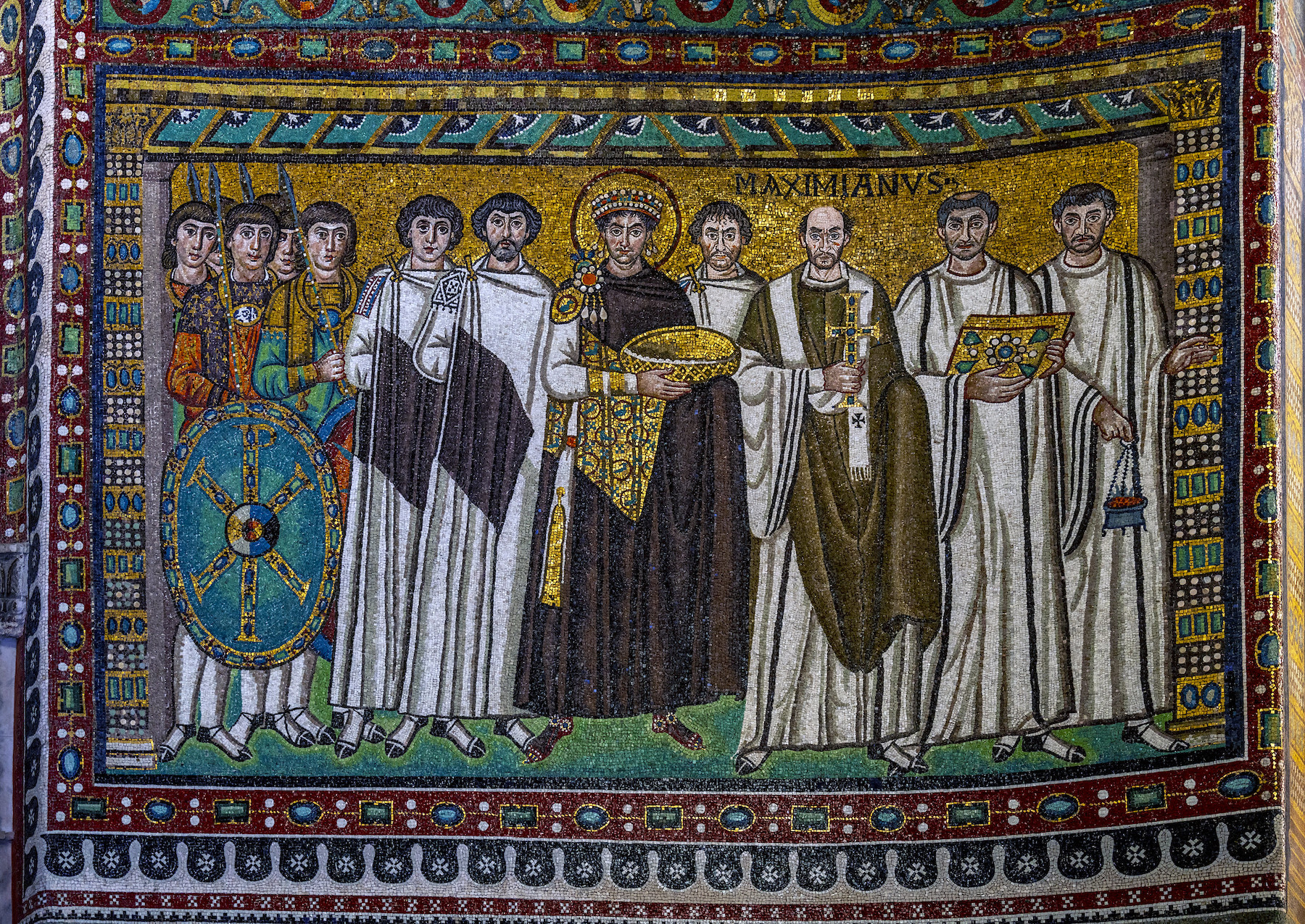
San Vitale and the Justinian Mosaic
-c. 547 C.E. Ravenna, Italy
- the main theme is the authority of the emperor in the Christian plan of history
- Justinian is frontal in the center of the mosaic; he wears a purple robe and a crown, surrounded by members of the clergy
- The left figure is the Bishop Maximianus of Ravenna, and the right is members of the imperial administration with purple stripes on their robes trailed by soldiers
- they carry a censer, the gospel book, the cross, and the bowl for the bread of the Eucharist.
_Justinian's Mosaic sits adjacent to the mosaic of Christ, who is also dressed in a purple robe.
_Justinian overlaps standing with the pope making him the closest to the viewer
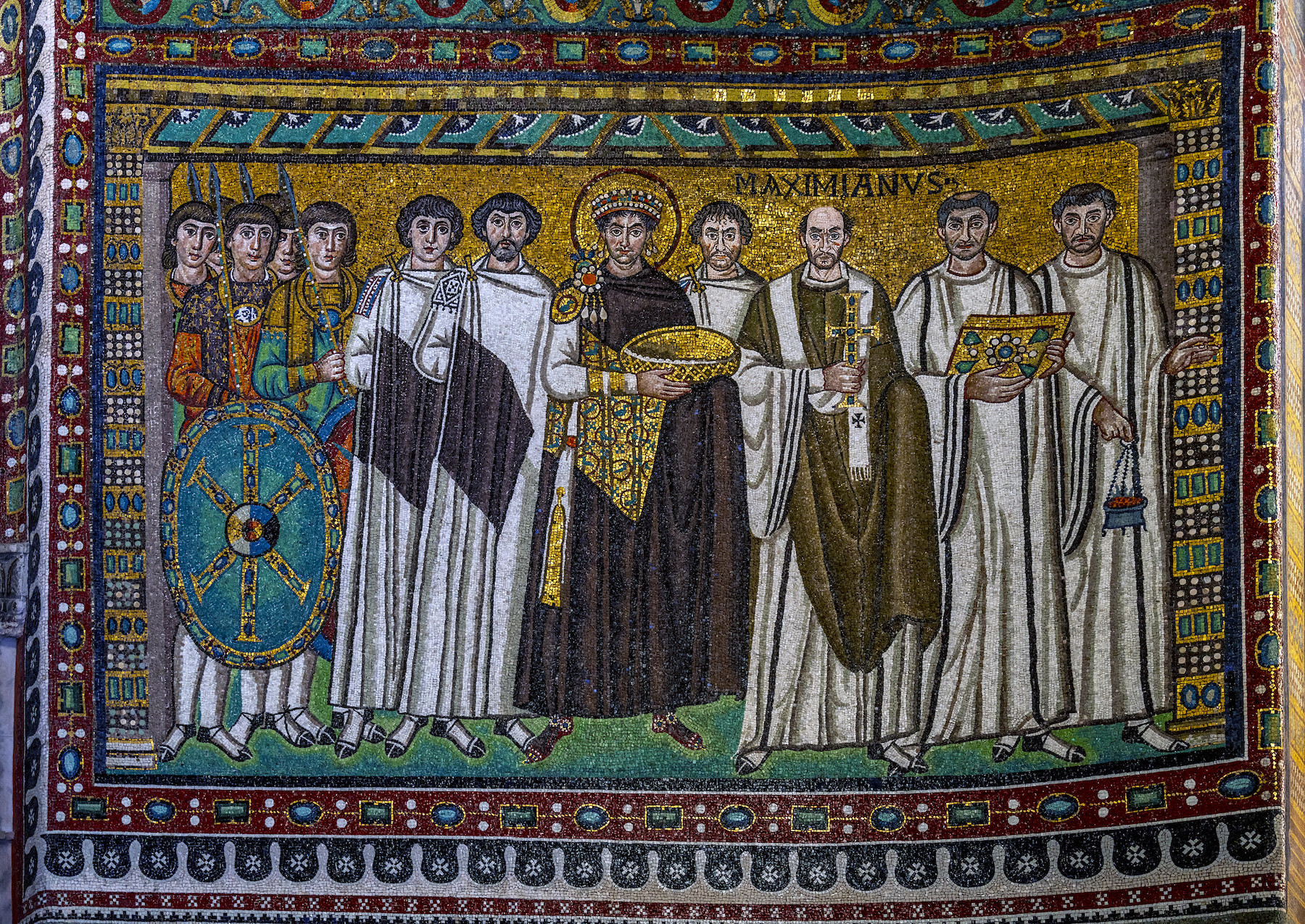

Anglo Saxon Fibula/ Brooches
- Early 6th-century, Anglo Saxon
- Made by a body, a pin, and a catch (safety pins), one of the most commonly found artifacts in barbarian graves. Byzantine Fibulae are called crossbow fibulae because of their resemblance to the weapon
- Used to fasten clothing decorated with animals and masks. The most famous example is the silver-gilt square-headed brooch found in 1855 in a woman's grave by George Hillier. It is covered in at least 24 different types of beasts (birds, human masks, animals, and hybrids)
- The helmet on the bottom is thought to represent the god Odin with his two ravens
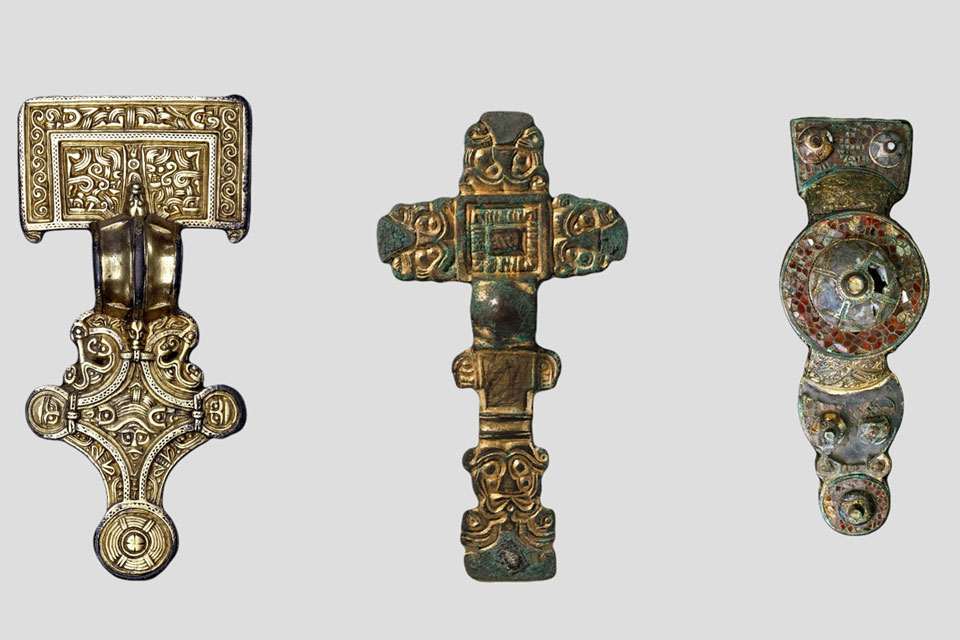
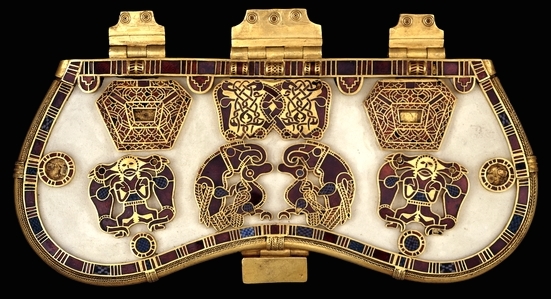
Sutton Hoo Purse Lid
- 7th century C.E. Sutton Hoo ship burial, gold, garnet, and millefiori 19 x 8.3 cm.
- shows a twinned image of a bird-of-prey swooping on a duck-like bird, a man standing in between two beasts.
-Used to display wealth and status in Anglo-Saxon society - The meaning of the pictures of the lid is unknown but it is assumed there is deep significance.
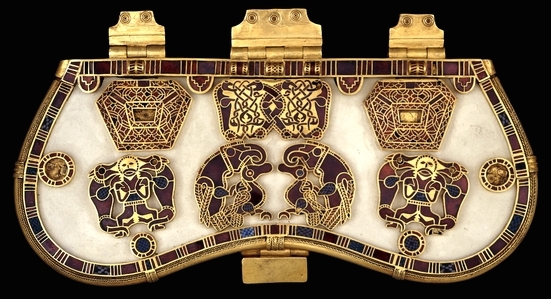
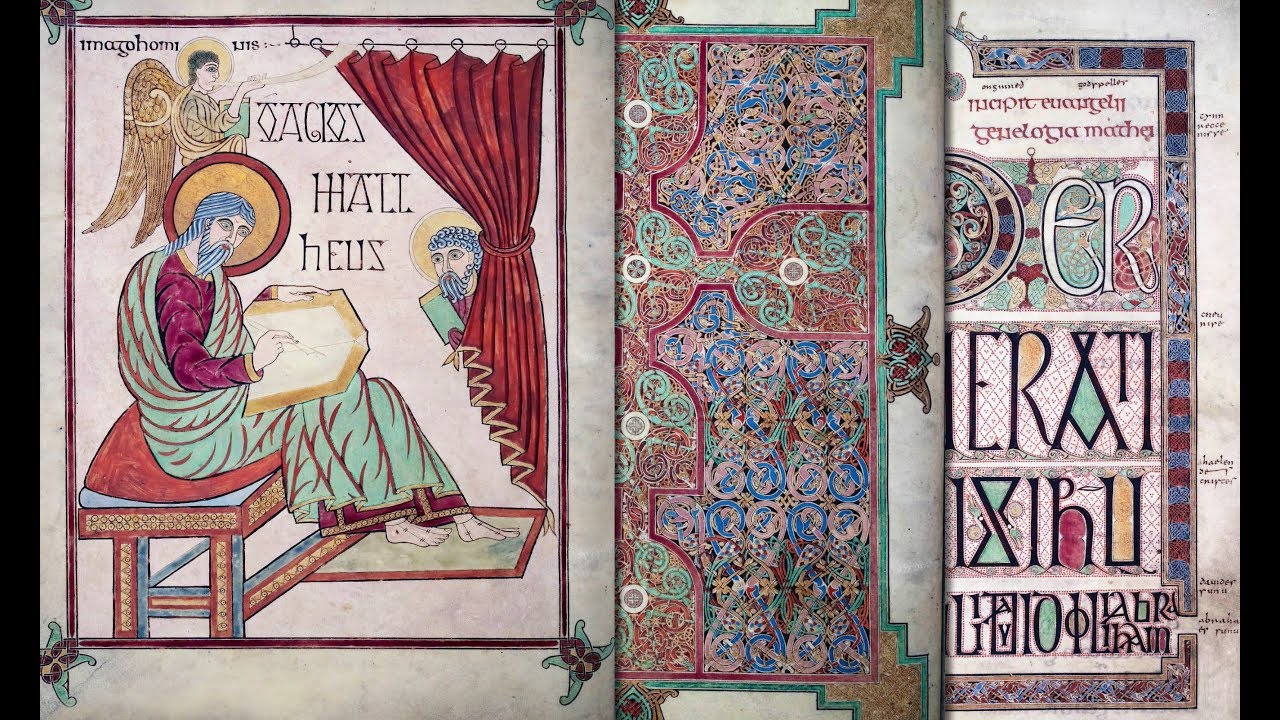
The Lindisfarne Gospels
- c. 700, Northumbria 340x250 mm Author is unknown, but it is assumed that the bishop did. It is 259 pages, including full-page portraits of the four evangelists, Matthew, Mark, Luke, and John.
- Handmade by Monks, includes evangelist portrait pages; in front of them is a "cross-carpet page" with a cross design separating the gospels from each other. Includes animal heads woven into the carpet pages.
-The gospel of Saint Matthew: His head is surrounded by a halo, seated on a stool, and in a naturalistic pose. His cross-carpet page consists of multiple repetitive knots and a central cross.
-The Gospel of Saint Luke: Animal-like spirals on his page and swirling vortexes. He also has a halo above his head and is in a purple robe signifying his role as a philosopher.
-Gospel signs: Matthew: a man, symbolizing the human side of Christ; Mark: Lion, symbolizing the triumphant and divine Christ's resurrection; Luke: a calf, symbolizing Christ's sacrifice; and John: an eagle, symbolizing the second coming of Christ
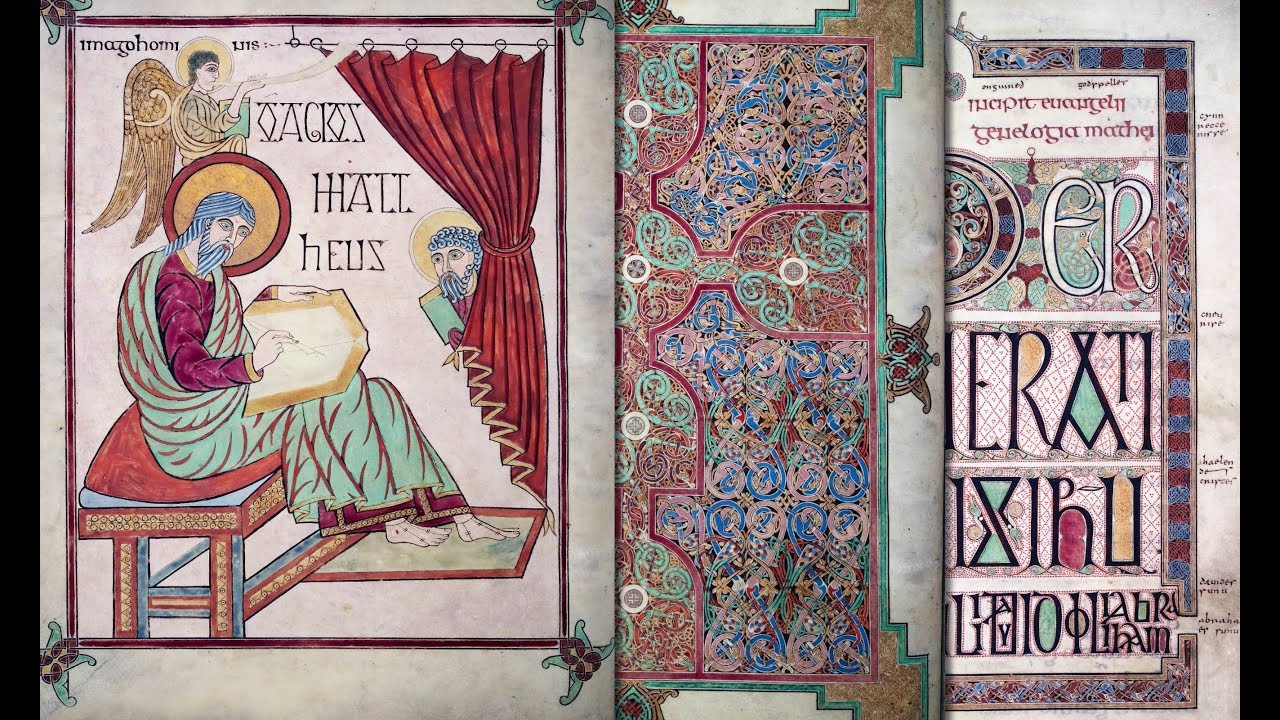
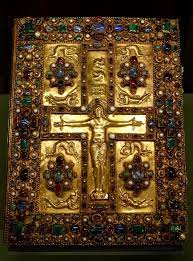
Lindau Gospels Cover
- c. 800, Court School of Charles the bold, 350 x 275mm, possibly made in the Royal Abbey of St, Denis, Carolingian Art. Made of gold, emeralds, and rubies.
- Created during an attempt to reestablish the Roman Empire under Charlemagne. Contains the gospels along with other information.
- Shows the crucifixion of Christ not suffering other than the blood dripping from his hand. He is robed like that of Roman classical art.
- The cross is made of small arches representing the architecture of the later Basilicas. Christ is surrounded by mourners.
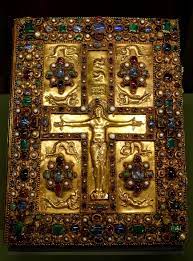
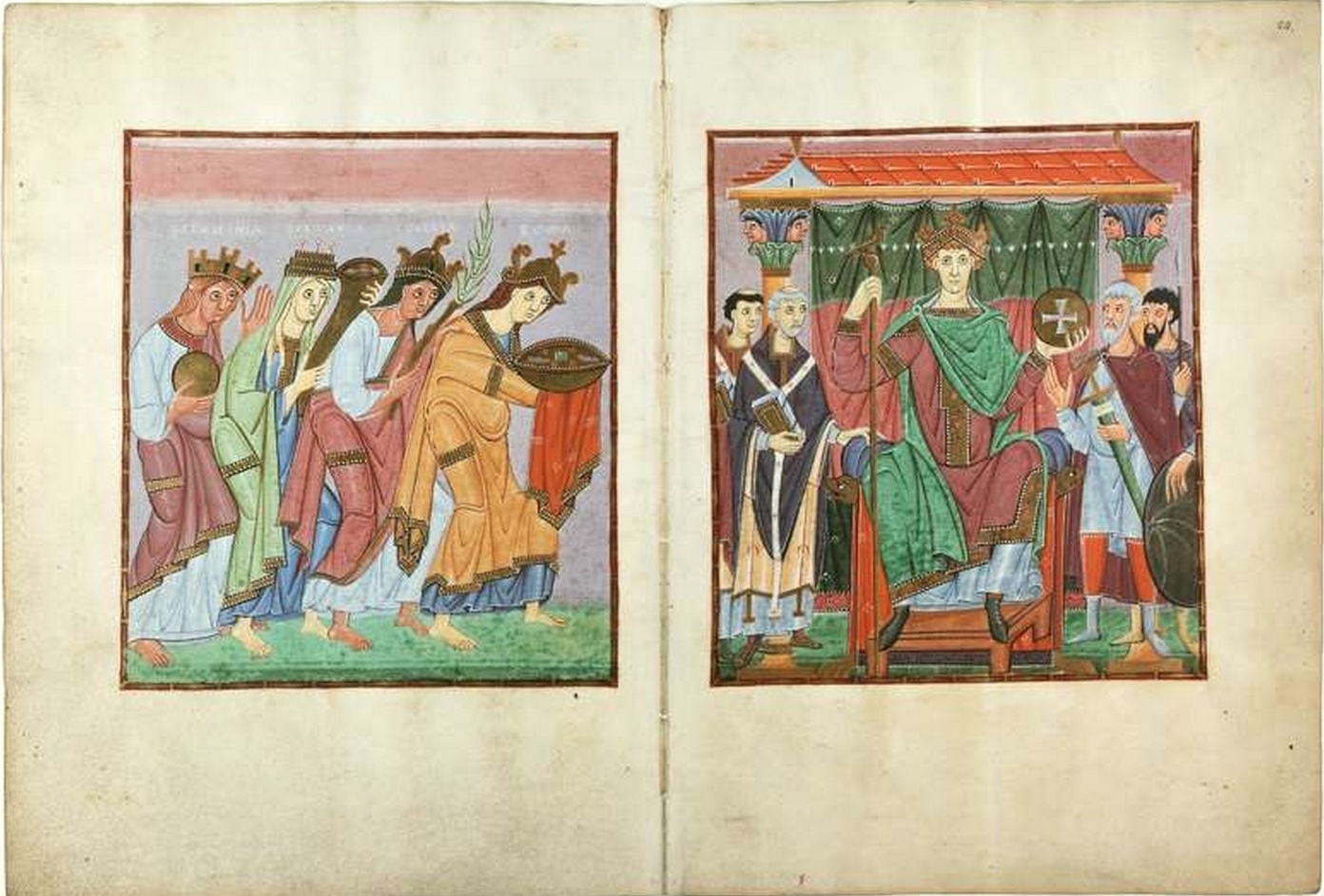
Gospel Book of Otto III
- c.1000 33.4 x 24.2 cm ink gold paint parchment.
-Belongs to the monastery known as Liuthar group. - Portraits of the four gospels and scenes from Christ's life. The front cover is decorated with jewels.
- The right side of the double shows Emperor Otto III is frontally sitting; he is crowned, holding an orb and a spear surmounted by an eagle. Dressed in green and imperial purple.
-Pendant image depicts four personifications of the territories he conquered. (Sclacinia, Germania, Gallia, and Roma)
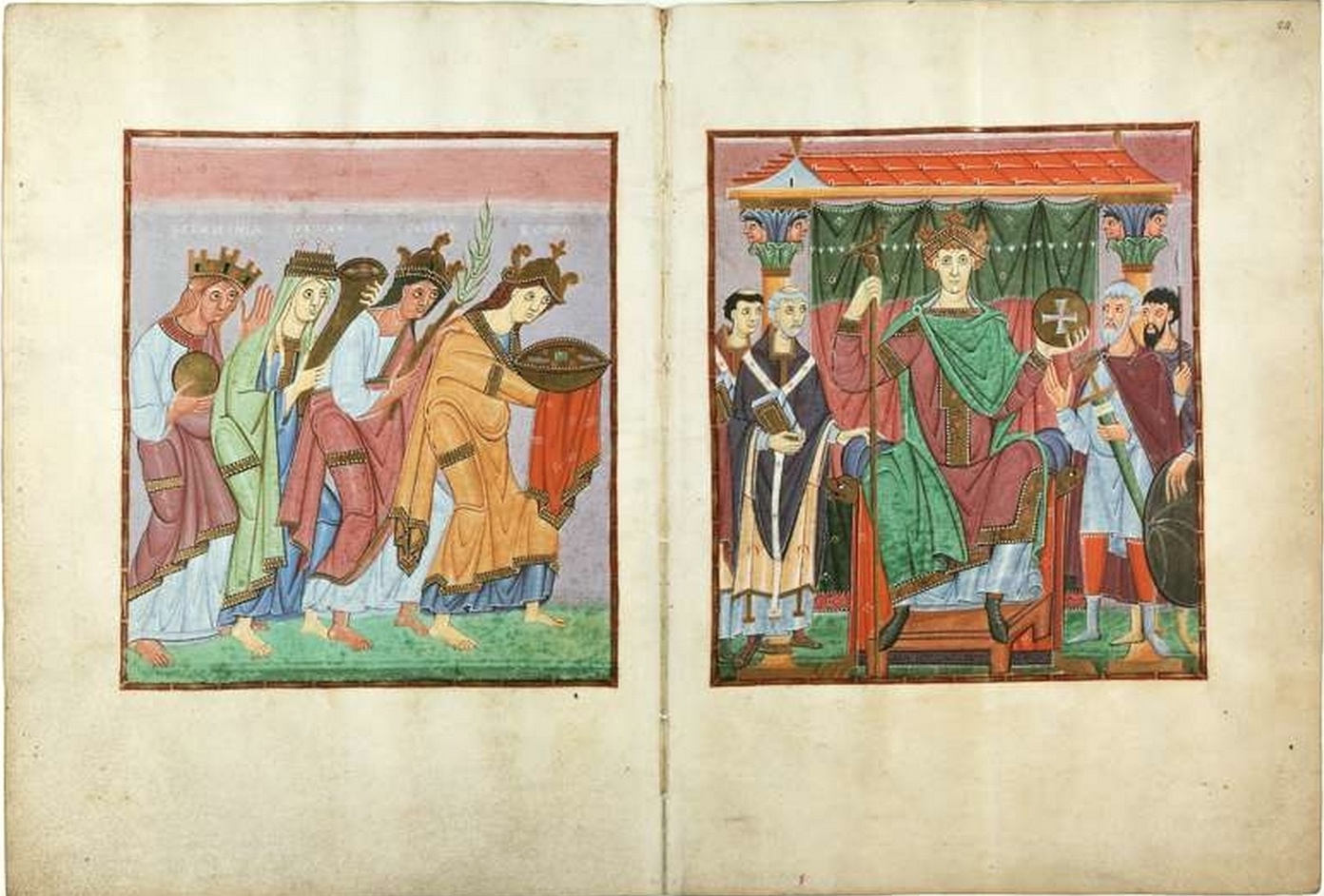

Last Judgement Tympanum
-c. 1130-1146 Central Portal on the west Facade of the cathedral of St. Lazare, France
- Images represent text. The center figure is Christ, he is frontal and symmetrical, and he is sitting on the throne of Heaven.
-The left side people are those who are dammed to Hell and to his right are the blessed who are going to Heaven. The Virgin Mary is enthroned in Heaven. and an angel is blowing a horn signaling the Coming of Christ. - St. Michael is shown weighing souls for the morality of sins.
-The figures going to hell are saddened.
-The bottom shows the souls rising from the dead, as well as angels of death terrifying souls - Engraved in the bottom is "Gislebertus hoc fecit" Gislebertus made this
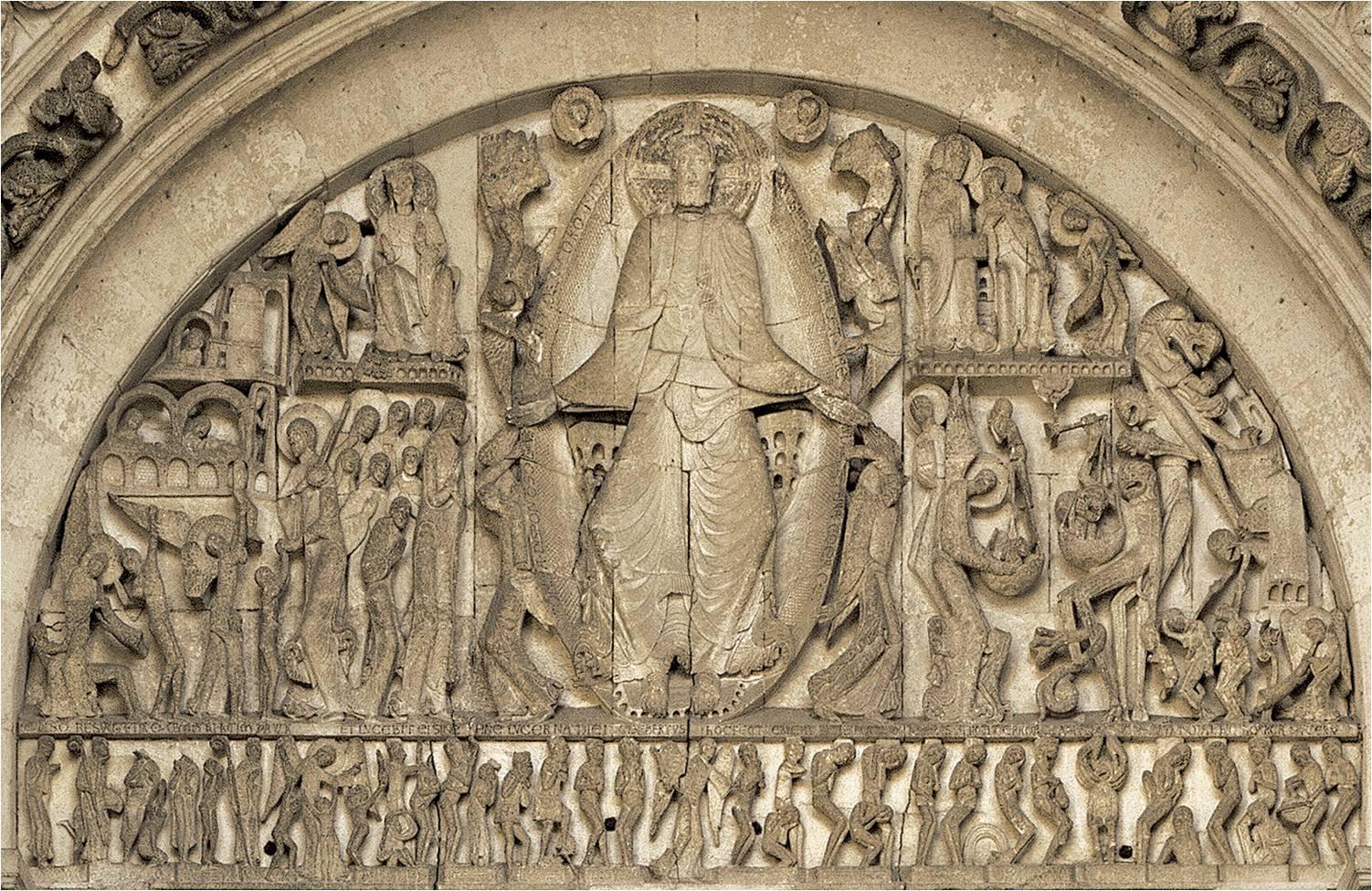
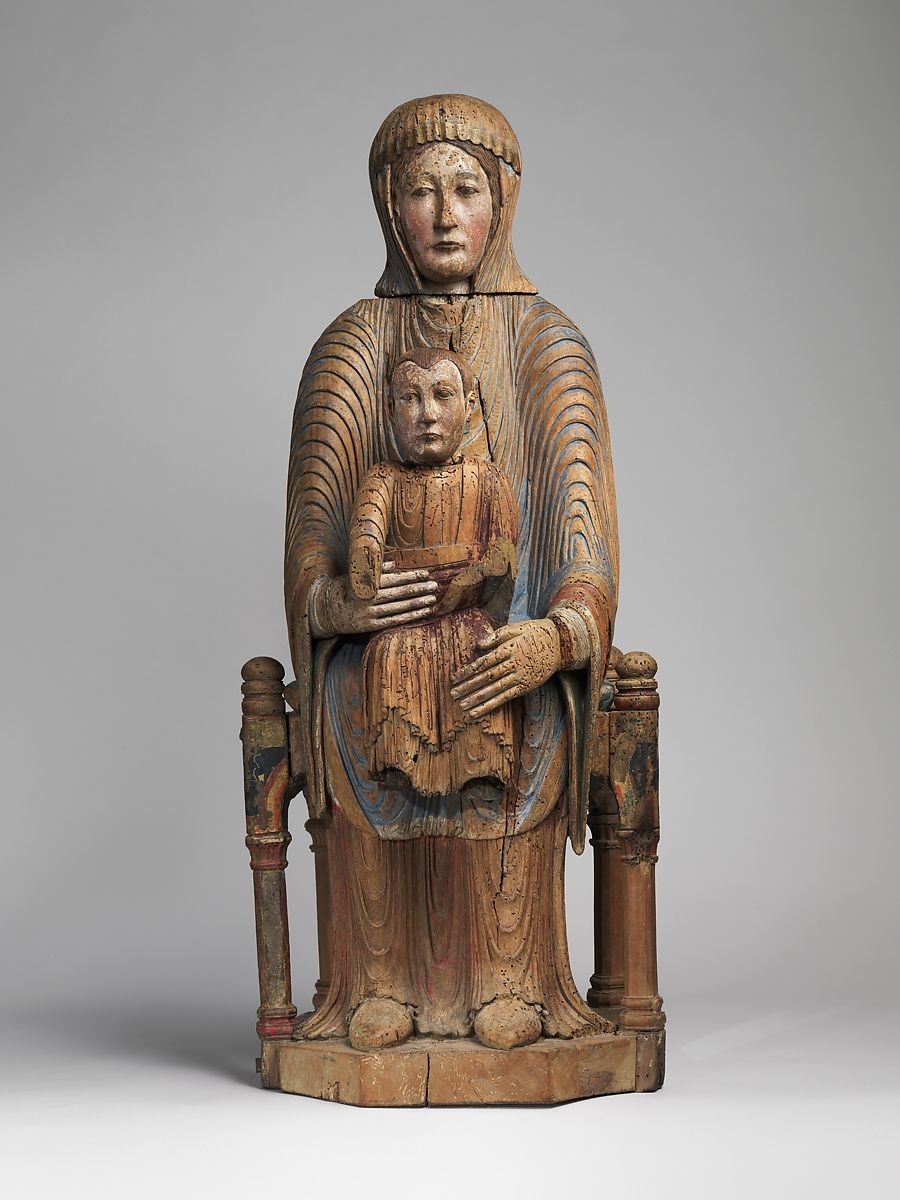
Virgin and Child in Majesty
- c. 1175-1200, Auvergne France, walnut with paint, tin relief on a lead white ground and linen.
- Mary's hands are unproportionate directing you to look at the Christ on her lap. Christ is seated on her lap and Mary serves as his throne.
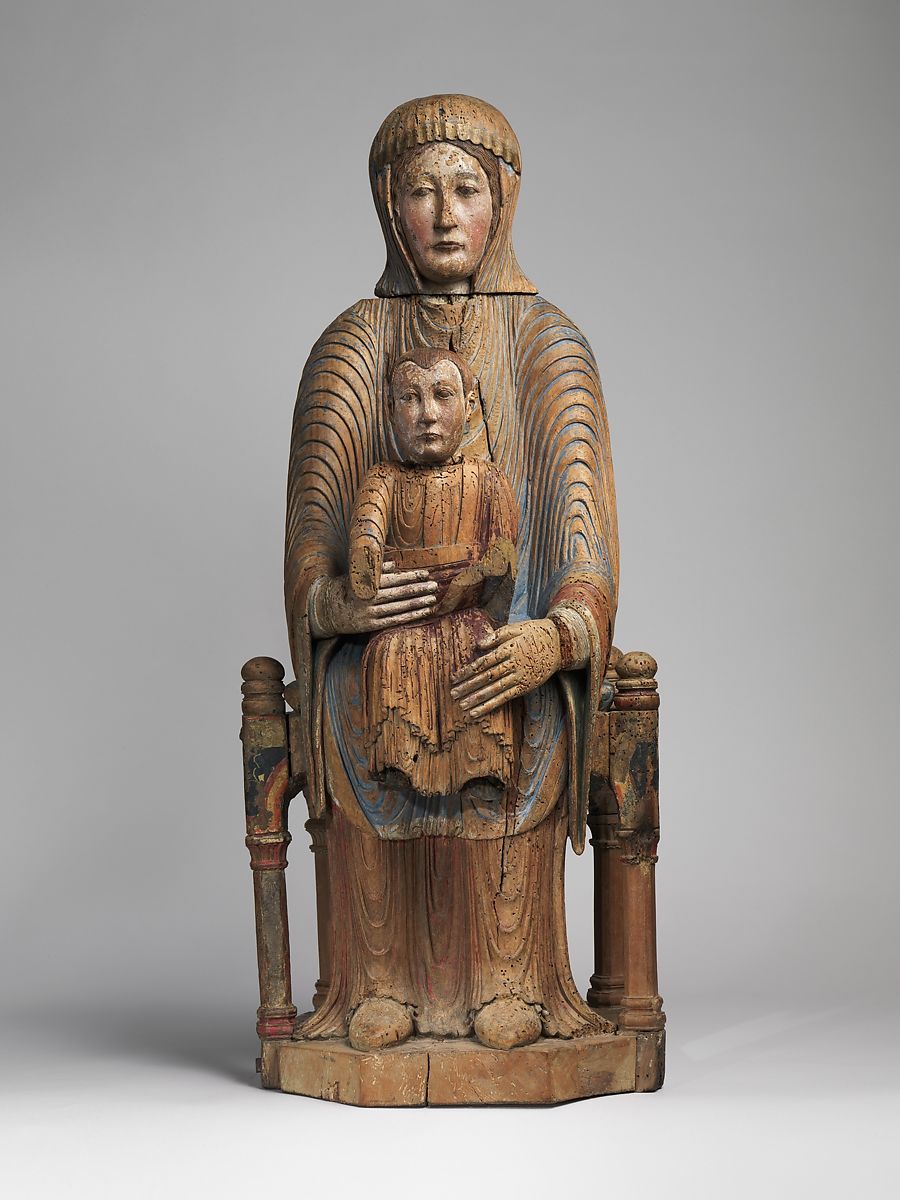
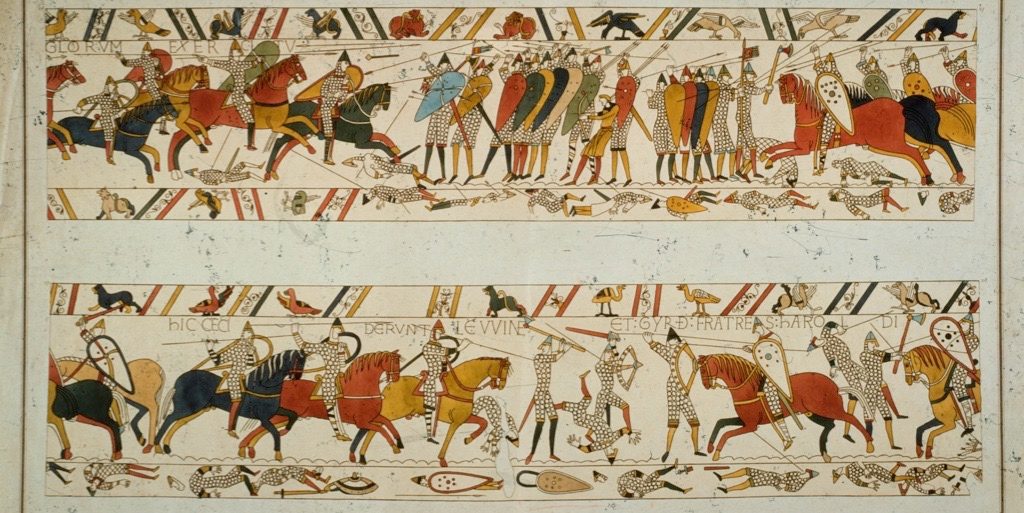
The Bayeux Tapestry
- c. 1070, embroidered wool on linen, 20 inches high and 230 ft long. Possibly made in Canterbury by Odo, Bishop of Bayeux
- commemorates a struggle for the throne of England between William, the Duke of Normandy, and Harold, the Earl of Wessex.
-consists of seventy-five scenes depicting the events leading up to the Norman conquest and culminating in the Battle of Hastings in 1066. The textile’s end is now missing, but it most probably showed the coronation of William as King of England. - Not a tapestry bc the images are embroidered. Leads the viewers eyes from one scene to the next
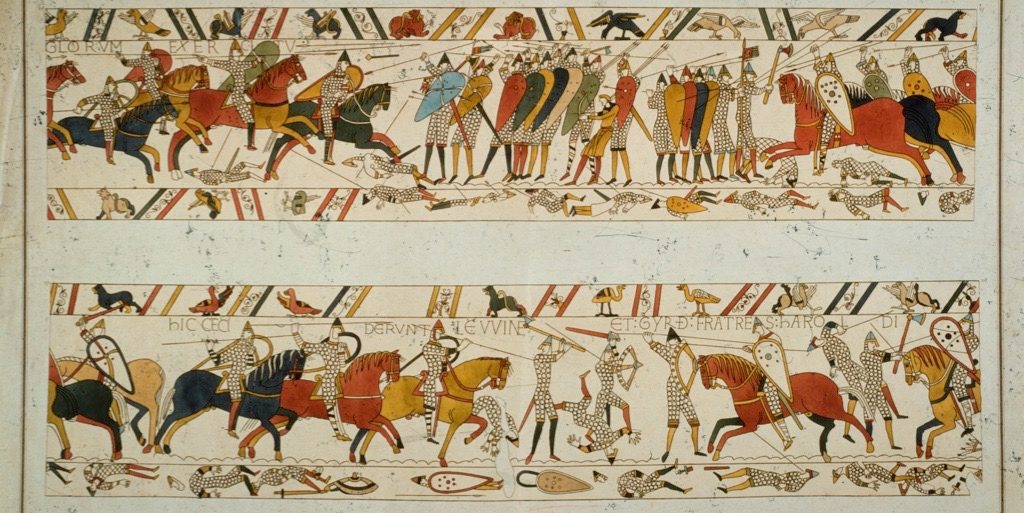

St. Denis
- c. 1140- 1144, Paris
- The burial place of the royal family. Built off of a 9th-century church that Suger wanted to make more Gothic
- The ambulatory takes you behind the altar, which allows pilgrims to look into chapels; Suger made them an open space to allow light to flood in.
- Interlocking pointing arches that push down, not out.
- Suger believed that allowing light in the church connected it more to Heaven. "the divinity if light"
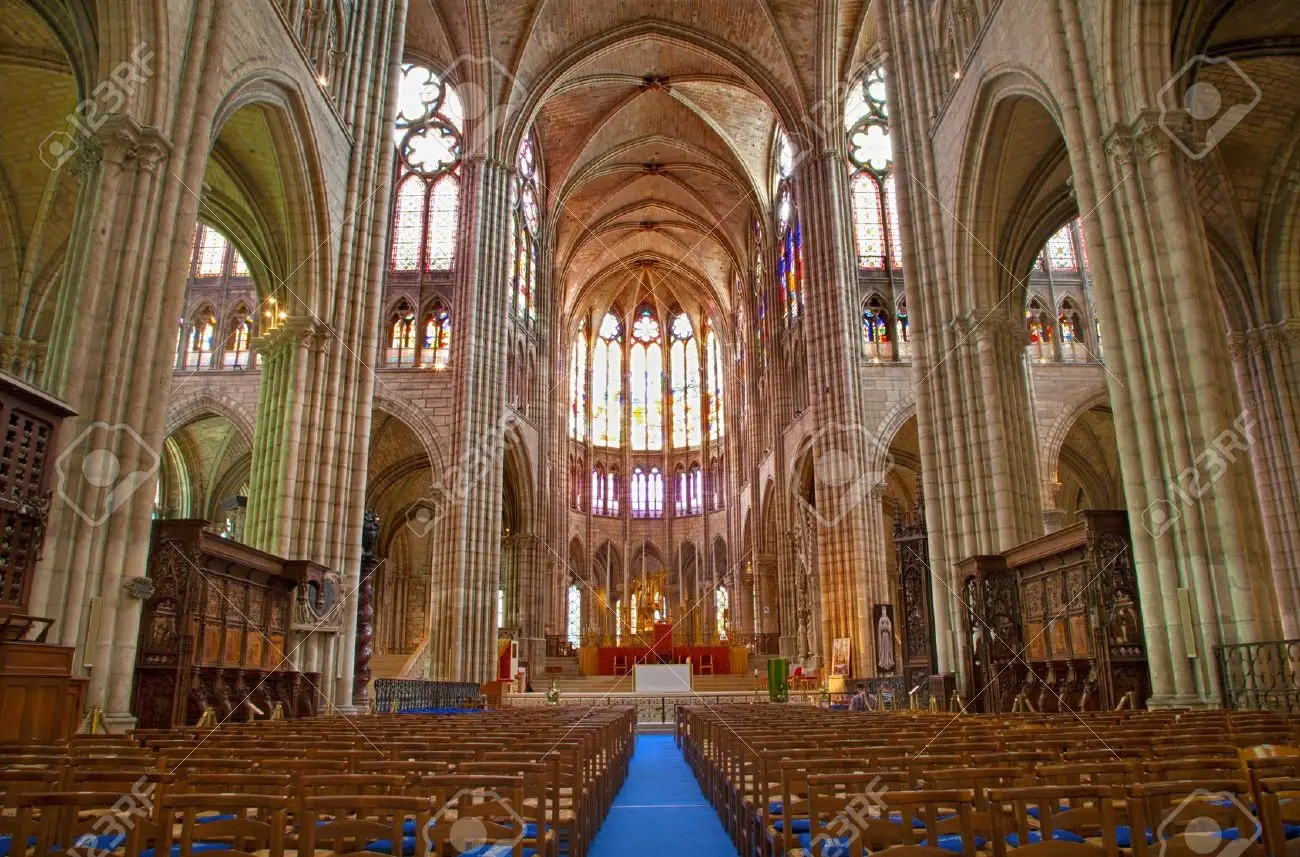
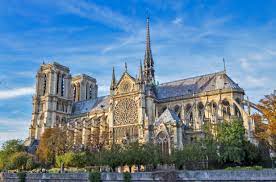
Cathedral of Notre- Dame
- c. 1163-1250, Notre Dame de Paris took nearly 100 years to complete
- symbol of theological worldly power. Was the tallest gothic cathedral of its time.
- Flying buttresses to take pressure off the building, the naive is a long narrow space made of stone walls and stained glass windows.
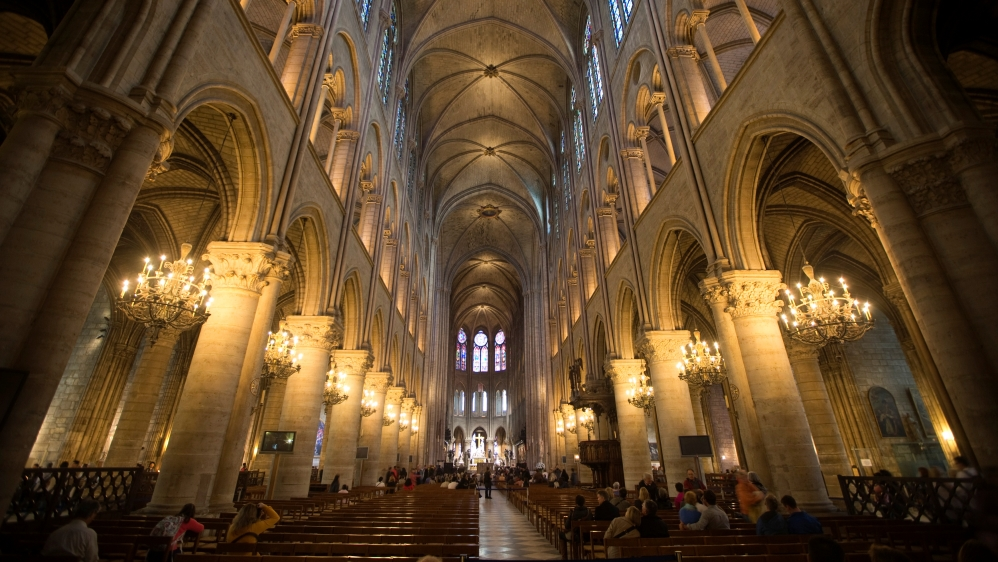

The Virgin of Jeanne d'Evreux
- 1324-1329, gilded silver, basse-taille, enamels on gilded silver, stones and pearls, 68 cm high
- She originally wore a crown on her head. It is a reliquary, given to St. Denis.
- Shows a tender relationship between Mary and Christ. Her head tilts towards Christ.
-Christ holds a pomegranate symbolizing his resurrection at the end of his life - Similar sculptures are in Notre- Dame.
-The positioning of her body shows movement but not enough to be contrapposto, the curving of the drapery shows movement.
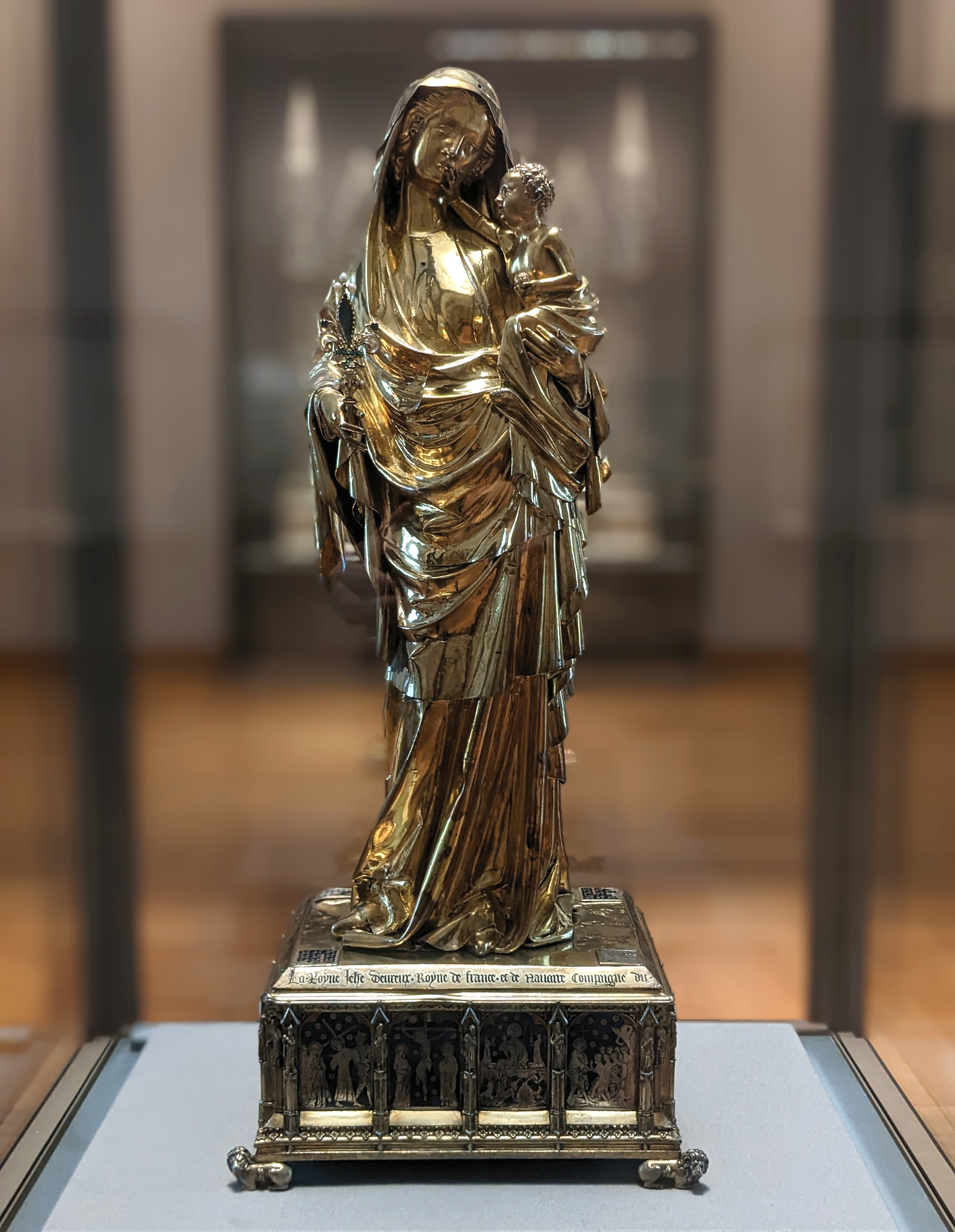
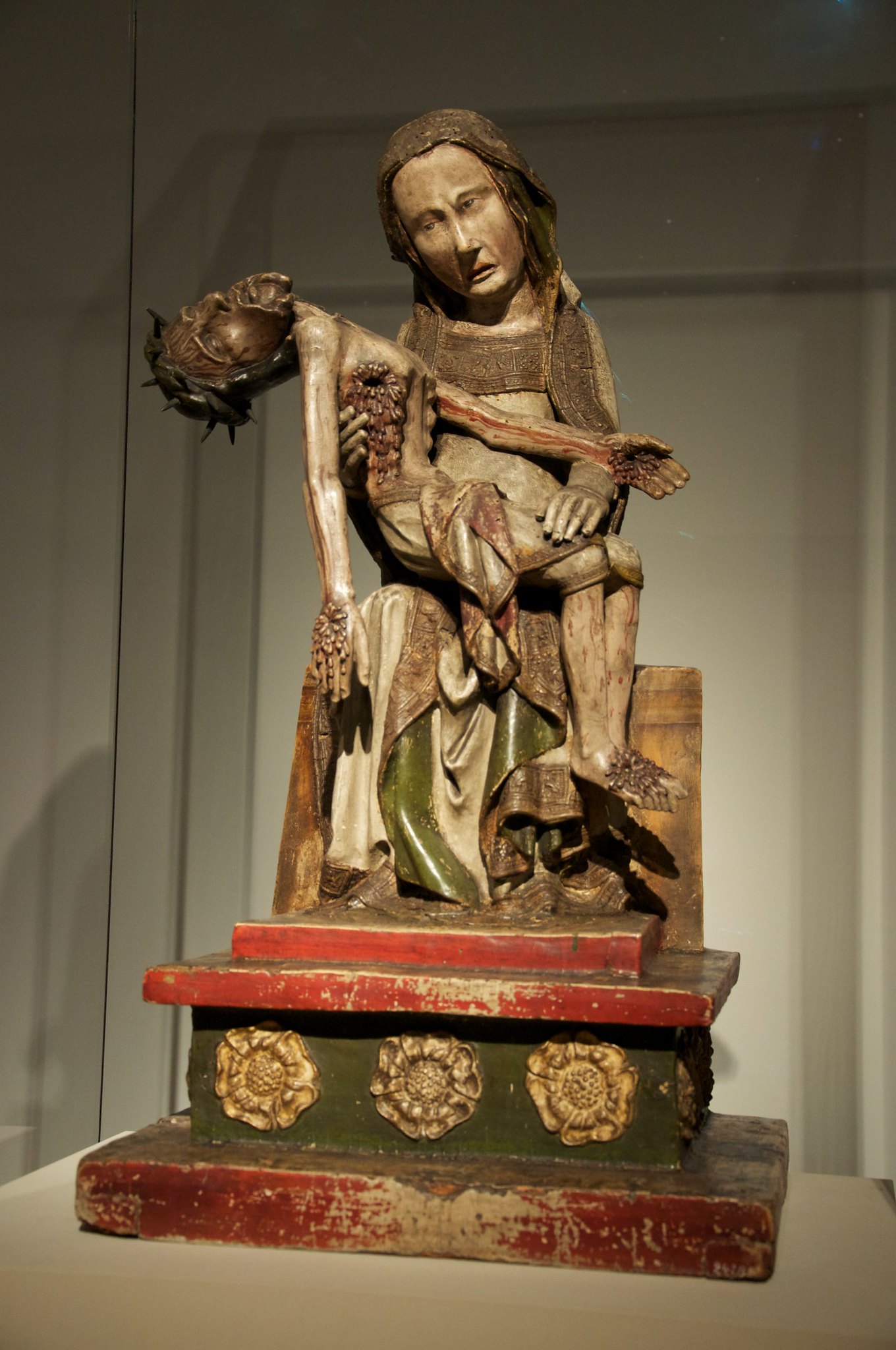
Röttgen Pieta
- c. 1300- 1325, painted wood, 34 1/2 in high.
- devastating image of Mary holding the dead Christ. Just sows Mary and Christ so you can focus on Mary's response.
-Gruesome details of the crucifixion on his sides hands and face. - Mary seems more upset over his death like it was a surprise to her. emphasizes her humanity. Changes how the Middle Age art views Mary.
